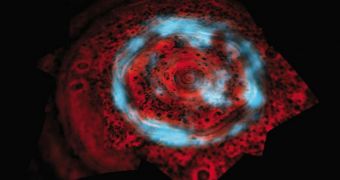Astronomers believe that they may have developed a new way of searching for extrasolar planets. They believe that massive, Jupiter-class planets may exhibit powerful aurora displays. If that is the case, then the radio waves these light shows produce should be easily distinguishable from Earth.
The technique is especially well-suited for planets whose orbit is very distant from their parent star. These objects are tremendously difficult to detect using existing methods, but the new approach could finally help experts solve this problem.
In the new study, scientists in England managed to demonstrate that it's possible to use instruments such as the European Low Frequency Array (LOFAR) telescope to detect the radiation eliminated by radio auroras on planets such as Jupiter and Saturn.
Experts with the University of Leicester explain that auroras are basically made up of ultraviolet light flares, which swirl around a planet's magnetic field lines, creating amazing displays. But the process also releases radio waves that have a distinct signature.
“This is the first study to predict the radio emissions by exoplanetary systems similar to those we find at Jupiter or Saturn,” explained Jonathan Nichols, an UL astronomer who presented the new findings.
“At both planets, we see radio waves associated with auroras generated by interactions with ionized gas escaping from the volcanic moons, Io and Enceladus,” the expert added. He made a presentation of the new conclusions on Monday, April 18, at the Royal Astronomical Society's national meeting.
“Our study shows that we could detect emissions from radio auroras from Jupiter-like systems orbiting at distances as far out as Pluto.” Nichols revealed, as quoted by Space.
According to the expert and his team, there would be numerous factors affecting the radio waves emitted by alien auroras. These include the rate of plasma outflow from a potential moon, the distance from the parent star, the ultraviolet brightness of the star, or the rate at which the planet itself rotates.
“In our solar system, we have a stable system with outer gas giants and inner terrestrial planets, like Earth, where life has been able to evolve,” Nichols told attendants at the meeting.
“Being able to detect Jupiter-like planets may help us find planetary systems like our own, with other planets that are capable of supporting life,” the expert added. Such a discovery would be monumental, and at the same time would certify several new technologies and research methods simultaneously.
Details of the new investigation will appear in an upcoming issue of the esteemed journal Monthly Notices of the Royal Astronomical Society.

 14 DAY TRIAL //
14 DAY TRIAL //